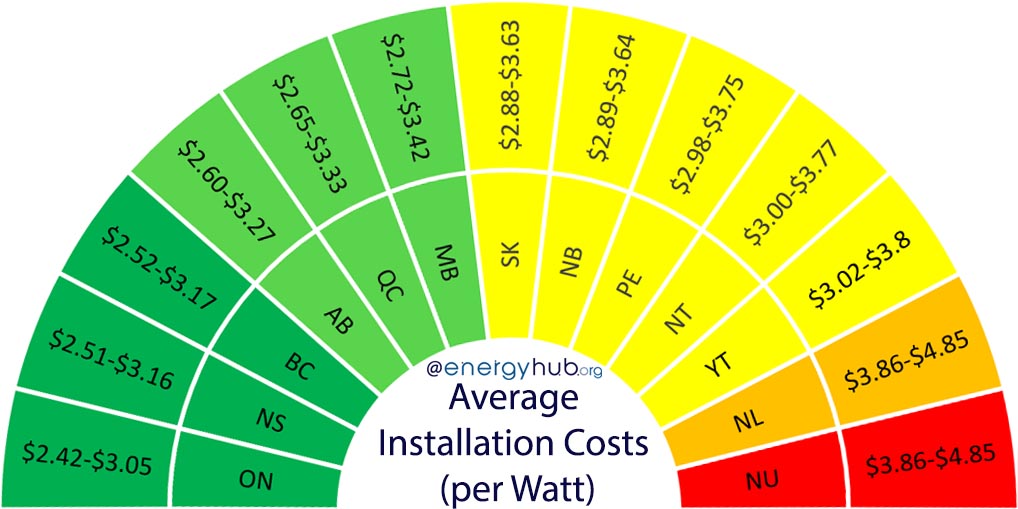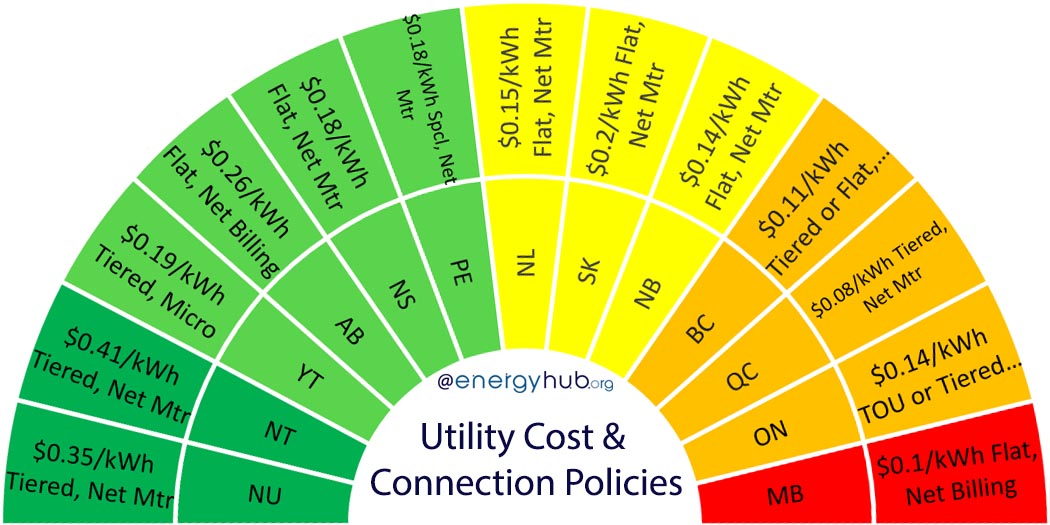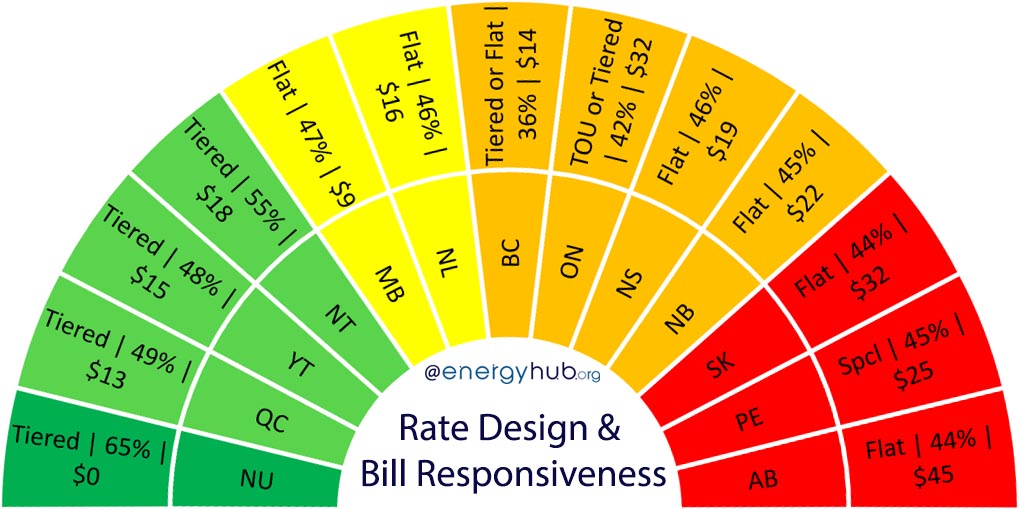Solar Power Saskatchewan (2024 Guide)
Congratulations! You’ve found the ultimate guide for installing solar power in Saskatchewan!
Published by Rylan Urban on Feb 4, 2017. Last updated Sep 9, 2023.
Saskatchewan is currently ranked the #9 province in the country for installing a solar power system, but scores as the best province for sunlight levels.
This page contains all relevant information about installing solar in Saskatchewan including utility policies, system financing, solar incentives, and natural factors – updated as of Sep 9, 2023.
The guide begins by answering the two most common questions about solar systems, then it explores each solar ranking factor.
You can read from top to bottom, or skip to your preferred section by clicking on it below:
Common Solar Questions
When thinking about solar power, the first two questions that often come to a person’s mind are:
- “How big does my system need to be?”
- “How much will it cost?”
You can answer these questions in three basic steps:
1. Sizing Your System
To determine the size of system that you need, you only need to know how much energy you use during the course of a year. Your monthly SaskPower Bill will show your usage (in kWh) similar to the photo below:
You can calculate your annual energy by adding up the amount shown for 12 consecutive months. Don’t make the mistake of multiplying a single month by 12 – usage fluctuates greatly depending on the season.
You can calculate the size of the solar power system that you’ll need with the following equation:
Size of system needed (kW) = yearly energy use (kWh) / annual equivalent full sunlight hours (h)
(annual average ‘equivalent full sunlight hours’ in Saskatchewan = 1,330h)
For example, let’s pretend that you added up your power bills and determined that you use 10,000kWh over the course of a year. You would then do the above calculation and determine that you need a 7.52kW solar panel system!
10,000kWh / 1,330h = 7.52kW
2. Physical Sizing
Now that you know the size of your system in units of kW, you can determine how much space the system will require by converting it to units of sqft.
The average solar panel is approximately 18sqft in size (including some buffer room for racking and spacing) and produces about 350 watts of power.
The equation to calculate the space that your solar system require is again simple:
Physical space required = size of system needed (in kW) / size of panel (in kW) * physical size of panel (in sqft)
(average size of panel = 0.35kW, average physical panel size = 18sqft)
Let’s continue from the previous section and assume that you need a 7.52kW system. You would do the above calculation and determine that you need 451sqft of space to install your system!
7.52kW / 0.35kW * 18sqft = 387sqft
(note that 350 watts equals 0.35kW)
If you’re putting solar panels on your roof, you should know that:
- A south facing roof is best, east and west facing are good, but north is not great
- You may need to replace your shingles (or entire roof) before installing – because panels are guaranteed for 25 years!
If you’re putting solar panels on the ground, you should know that:
- These systems are more expensive upfront due to piling, mounting , and trenching requirements
- They are more efficiency because they can be easily placed to the optimal direction (south), the optimal angle (~45°), and to avoid shading
- Thus, these systems are more efficient and have better lifetime IRRs and NPVs.
Most residential homeowners in Saskatchewan put solar panels on their roof. Rural property owners put systems on the roof of their house or shop – or on the ground in their yard.
3. System Costs
The last piece of basic information that you’ll want to know is an approximation of how much your system will cost. To calculate this, you just need to know the size of the system in units of kW.
The rough calculation is simple. Just take the size of your system and multiply it by the $3.30/watt – the average cost of installing a solar system in Saskatchewan.
You can calculate your total system costs with the following equation:
System cost = size of system needed x cost per installed watt
Continuing with our previous example, we can see that a 7.52kW system would cost approximately $24,816 to install.
= 7,520watts x $3.30/watt
= $24,816
Note that the exact price of the system depends on several factors including the system size, the quality of equipment used, and the complexity of the job.
Even the range in the chart above is just an average – installation prices can easily go as high as $3.50+/watt for premium equipment and high quality installers.
Ready to get started? Then get a free personalized cost estimate:
Overall Ranking
Every year, we score every province and territory in Canada on the relative feasibility of installing a solar power system. This year, Saskatchewan scores #9, receiving a total score of 64/100.
The remainder of this guide explores each ranking factor individually, while also providing important information about installing solar in Saskatchewan.
(if you want to learn how we score each factor, please visit our Provincial Solar Rankings page)
Solar Incentives
Major Program: Expired
Savings: None
Saskatchewan does not currently have any solar incentive programs. These factors are important because they reduce the upfront system costs. We’ve scored Saskatchewan 4/20 for this section.
Rebates & Tax Breaks
Saskatchewan recently had one of the best solar rebate programs in the country, however, as of November 1, 2019 – this program has ended completely.
Note that all provinces have access to the Federal Greener Homes Rebate of up to $5,000. This could reduce the cost of a 7.52kW system from $24,816 to $19,816. Go back to the Common Solar Questions section if you’re not sure where these numbers are coming from!
Businesses can now use the Federal Tax Provision for Clean Energy Equipment to fully expense their solar system. This means a CCA rate of 100% and the abolishment of the first year rule.
Other Clean Energy Incentives
There are at least 2 other energy incentive programs available in the Saskatchewan. While not considered in our solar rankings, many homeowners choose to leverage these (i.e., home energy efficiency incentives) around the same time they switch to solar.
Natural Factors
Production Potential: 1330kWh per kW per year
Saskatchewan is the best provinces in terms of the natural factors that influence the maximal amount of energy that a system can produce. We’ve scored Saskatchewan 20/20 for this section.
Solar Irradiance
Saskatchewan has the highest potential to produce solar energy in all of Canada, receiving more solar irradiation than any other province or territory!
According to data from Natural Resources Canada, the average solar system in Saskatchewan can produce 1330kWh of electricity per kW of solar panels per year.
Here is how much an average solar system can produce each month, as well as the solar irradiance potential map for Saskatchewan:
This yearly average decreases as you move north and east in the province and increases as you move south and west. For example, a 1kW solar system in:
- Saskatoon would produce about 1,350 kWh/yr
- Regina would produce about 1,361 kWh/yr
- Prince Albert would produce about 1,300 kWh/yr
- Moose Jaw would produce about 1,363 kWh/yr
- Lloydminster would produce 1,278 kWh/yr
Recall that this is the number we used in the System Sizing section!
(maps and solar irradiance data for all other provinces and territories can be found on our Solar Maps page.)
Utility Policies
Connection Policy: Net Metering
Rate Design: $0.20/kWh, Flat
Saskatchewan scores in the middle of the provinces when it comes to utility-related factors.
Utility factors determine how much money your utility will pay you for the power you produce, along with how much money you will save on your power bill by reducing your usage. We’ve scored Saskatchewan 19/30 for this section.
Interconnection Policy

Net Metering is one of the most important policy mechanisms that makes solar a feasible energy generation option.
Net Metering essentially means that you earn credits for the excess energy that you produce, which can then be used at a later time. It’s common to produce excess energy during the day and summer but not enough at night and during the winter – so this policy is important!
Good net metering policy allows you to earn full credits for your excess energy which can be carried month-to-month. Bad net metering policy allows you to earn only partial credits for excess energy and credits can’t be carried forward month-to-month.
SaskPower’s Net Metering Policies fall in the “bad” category. It allows for systems up to 100kW in size to be connected to the grid and credits can be carried forward month-to-month.
However, you will not receive credits for excess energy production at the retail rate (like you do in most other provinces). You will get paid just $0.075 for the excess energy you produce, roughly 1/2 of the retail rate!
Solar Setup Fees
The fees for setting up a solar system vary depending on who you pay for your electricity, with SaskPower customers paying the most:
SaskPower
- SaskPower paperwork
- $498 new meter fee
- $315 interconnection fee
Saskatoon L&P
- Saskatoon L&P paperwork
- $100 witness test
Swift Current L&P
- SaskPower paperwork
- No fees!
This is opposed to many provinces like Alberta where the utility covers the cost of the interconnection study and bi-directional meter.
Electricity Prices
Saskatchewan is one of the better provinces for solar with respect to electricity prices – higher prices mean higher savings potential.
Based on a monthly usage of 1,000kWh, the average total cost of electricity in Saskatchewan is $0.199/kWh (this number includes both fixed and variable costs).
This number is higher than the Canadian average of $0.155/kWh (excluding the territories), meaning that property owners in Saskatchewan have a lot of potential savings!
(methodology and data on other provinces and territories can be found on our Electricity Prices page.)
Utility Bill Rate Design
Good electricity rate design allows you to save money when you save energy. This might sound intuitive – but not all provinces are same. Superior designs have low fixed monthly fees and tiered electricity rates. Inferior designs have high fixed fees and flat electricity rates.
Saskatchewan scores in the back of the pack when it comes to these factors – having flat rates and fixed monthly fees of $32.
For example, reducing your electricity bill from 1,500 to 750 kWh per month will save you 55% on your electricity bill Northwest Territories, 44% in Saskatchewan, but only 36% in British Columbia!
Note that fixed monthly fees don’t disappear even if you switch to solar – you’ll pay them as long as you remain connected to the grid. But this isn’t a bad thing – $32/mo is a small price to pay for using the grid as your back-up energy source!
(methodology on our Electricity Prices page.)
The only way to completely remove your fixed costs is to go off the grid, something most homeowners in Saskatchewan don’t do because of high battery costs.
Disconnecting from the grid also means that you won’t be able to participate in your utility’s net metering program.
System Financing
Upfront Cost: $3.30/watt
Financing: Partial PACE
Saskatchewan is in the middle of the pack when it comes to financial factors because of moderate pricing and partial PACE financing options. We’ve scored Saskatchewan 21/30 for this section.
Cost of Installation
The upfront cost of installation is obviously one of the largest factors that determine whether or not a person is going to switch to solar. The current average price range in Saskatchewan is about $2.88-$3.63 per watt.
(not sure what this number means or how to use it? Jump back up to the Common Questions section.)
However, the price can easily be higher or lower depending on the size of the system, the complexity of the job, the type of equipment used, and even on the quality of your installation company.
In general, aiming for the cheapest price shouldn’t be your goal. Most solar panels are guaranteed to last for 25 years, so you want to make sure that your installation job is good enough to support that.
You’ll also want to be sure that the company you choose will be around in 5 to 10 years from now in case you need service or warranty work done. If you get a quote through us, we’ll connect you with a pre-vetted installer!
PACE Programs
Property Assessed Clean Energy (PACE) is an innovative financing option that allows you to cover the entire upfront cost of your solar system (or energy efficiency upgrades) with a $0 down, long amortization period, low interest ‘loan’.
However, unlike a typical loan, this loan is attached to your property (not you) and is paid back on your property tax bill as a Local Improvement Charge (LIC). The only eligibility is that you need to own a certain portion of your home.
In Saskatchewan, PACE is currently only available in Saskatoon and it’s call the Home Energy Loan Program and provides loans up to $60,000 over flexible repayment terms of up to 20 years.
Other Energy Financing
Obviously though, PACE is not the only way to finance a solar system. Systems can be financed by cash, bank loans, installer financing, home equity loans, a home equity line of credit, a mortgage (for new builds), or through energy loans.
All provinces and territories can leverage the Federal Greener Homes Program which can provide up to $40,000 in interest free loans! See our Clean Energy Financing Page to learn more about programs available across the country.
Solar Power Saskatchewan
Because of Saskatchewan’s lack of incentives and poor utility policies – we rank it as being the #9 province in the country for switching to solar power.
Ready to get started? Then get a free personalized cost estimate:














